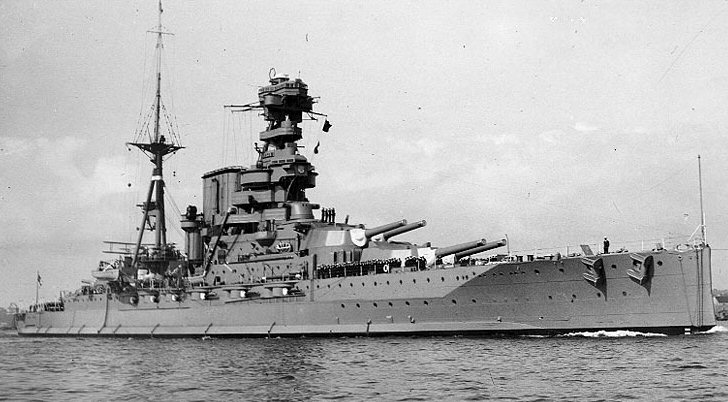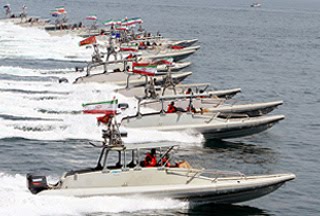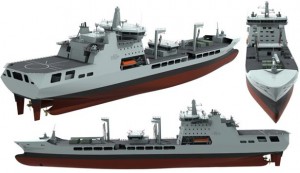
It has been more than a month since the Senate failed to pass legislation that would have blocked U.S. Navy efforts to develop and use biofuels. This passage of time means it might now be possible to make a less emotional and more measured comparison of the Navy’s “Great Green Fleet” to the decision-making processes behind previous similar historic transitions in propulsion.
The stated goal of the Great Green Fleet is to fuel an entire Carrier Strike Group with “alternative sources of energy” by 2016 (the definition of which helpfully includes nuclear-powered aircraft carriers and submarines). Most of the controversy surrounding the project has been over the amount spent developing sources of biofuels ($170 million), a main focus of the Navy’s drive to find half its fuel from “alternative sources by 2020”.
Comparisons between the U.S.’s current naval situation and that of Great Britain a century ago may be so common now as to be cliche (a topic I’ve dabbled in myself on a few different occasions), but this potential change in the preferred source of propulsion for the surface fleet is reminiscent of the Royal Navy’s shift from coal to oil before the First World War. Convinced that oil was necessary to make new ships that would outperform and outfight those of the Germans, Winston Churchill, civilian head of the Royal Navy as First Lord of the Admiralty from 1911 to 1915, created a commission led by then-former First Sea Lord Admiral Jackie Fisher with instructions to figure out how to implement the change: “You have got to find the oil; to show how it can be stored cheaply: how it can be purchased regularly & cheaply in peace, and with absolute certainty during war.”
Some of the factors used by the leaders of the U.S. Navy today in evaluating the fuel issue echo the way that it was framed by Churchill a century ago, with the performance implications of the fuel, costs, and the security of supply informing the decision-making process to different degrees.
Since the biofuels to be used by the Great Green Fleet are interchangeable with current oil-derived fuels, the actual performance benefits for the U.S. Navy are minimal, and the difference between old and new fuel sources ought to be transparent to the operator. There were significant performance advantages associated with a switch from coal to oil by the Royal Navy, however. While coal was less prone than oil to explosion if struck by enemy fire, this was greatly outweighed by oil’s much diminished labor requirements – no need for stokers to haul coal from storage spaces to the plant – and ease of refueling at sea. On a pure performance comparison, oil-driven engines also generally allowed ships to go faster and further.
Although the cost of oil was not necessarily the biggest issue in debates over the switch from coal in the early twentieth century it has been the main item of contention surrounding the Great Green Fleet. Biofuels for the Great Green Fleet have regularly been described as four times the cost of regular fuel. The Secretary of the Navy has countered that the high costs associated with the initial investment will be worthwhile because the investment will help make alternative fuels “more commercially viable” and cheaper in the long run. While biofuels are much more costly now, price volatility means that oil’s current price advantage is not always guaranteed.
In fact the vulnerability of the global oil supply is the primary issue both debates considered, although each set of decision-makers reached an opposite set of conclusions. While the U.S. is not necessarily dependent on oil extracted in the Middle East, the volume of oil originating from major suppliers like Saudi Arabia has a significant impact on its price, which in turn affects the American economy and consumers (including the military). In its public pronouncements on the Great Green Fleet, the U.S. Navy has made such a consideration clear, arguing that “the purpose of these energy goals is to improve our combat capability and to increase our energy security by addressing a significant military vulnerability: dependence on foreign oil.” “Market volatility” in its own right has been a significant Department of Defense cost, with price increases alone accounting for a $19 billion bill in 2011.
Skeptics of the Royal Navy’s proposed switch to oil propulsion had serious reservations about its supply. Wales was a rich source of the high-grade coal used by warships of that era, and the U.K. at the time had no domestic source of oil (Jackie Fisher famously stated that “Oil don’t grow in England.”). Fortunately, oil exploration had just seriously begun in the Middle East, and Britain “solved” its oil supply problem by government investment in the new Anglo-Persian Oil Company and an agreement for a twenty year oil supply. A revisionist assessment also puts the supply question on its head, holding that British leaders, fearful of labor unrest, felt Middle Eastern oil was a more secure commodity than coal taken out of the ground.

Regardless of why the decision to adopt oil propulsion was made, its implications (oil historian Daniel Yergin called it “Churchill’s great gamble”, pushing “for conversion to oil before the supply problem had been solved”) were significant, committing Britain to maintaining a secure supply line to the Middle Eastern oil fields in order to keep its military machine going. This may not have necessarily been a major new commitment when Britain still maintained India and a variety of other Asian territories as part of its Empire, but it was a significant geopolitical decision, one mirrored decades later by the U.S. when President Carter outlined what has since been labeled as the Carter Doctrine, a policy of U.S. military commitment to the region that has been acted upon by each of his successors. Carter stated in his 1980 State of the Union address that:
“An attempt by any outside force to gain control of the Persian Gulf region will be regarded as an assault on the vital interests of the United States of America, and any such an assault will be repelled by any means necessary, including military force.”
Ironically, the British shift to oil-powered ships had little to no impact on the fight at sea during the First World War. In fact, the Royal Navy was faced with shortages caused by German U-Boat attacks on tankers, resulting in extended stays in port and speed limits on some ships. To Winston Churchill, however, the tactical advantages of oil outweighed other considerations like the cost of oil and any potential supply vulnerabilities. He felt that oil would help the Royal Navy win a war at sea with Germany and that “Mastery itself was the prize of the venture.”
The relevant question today is whether the strategic calculus has changed since that time. To the Royal Navy a century ago, the risk of an uncertain supply of fuel was mitigated by the expectation of better fighting ships. Does the current uncertainty associated with oil make it a vulnerability to the fleet, and can that vulnerability be managed or hedged against by biofuels or other energy sources?
Lieutenant Commander Mark Munson is a Naval Intelligence officer currently serving on the OPNAV staff. He has previously served at Naval Special Warfare Group FOUR, the Office of Naval Intelligence, and onboard USS Essex (LHD 2). The views expressed are solely those of the author and do not reflect the official viewpoints or policies of the Department of Defense or the US Government.




